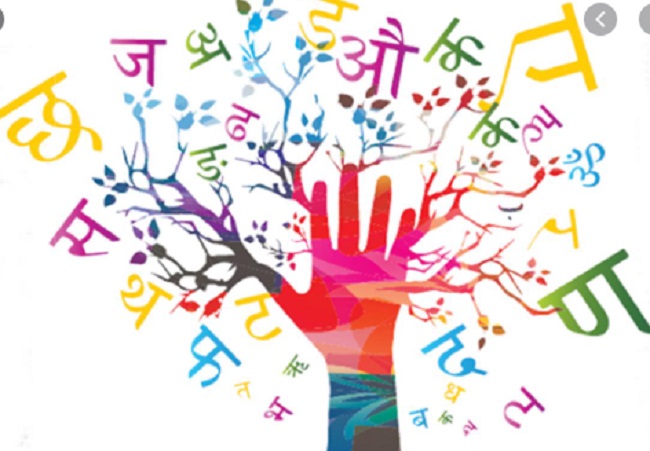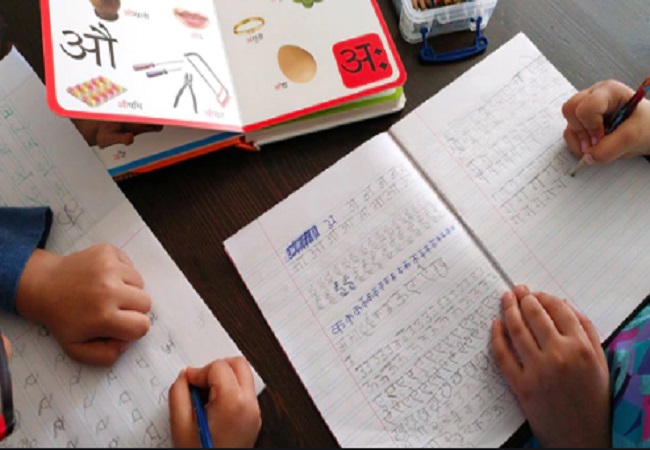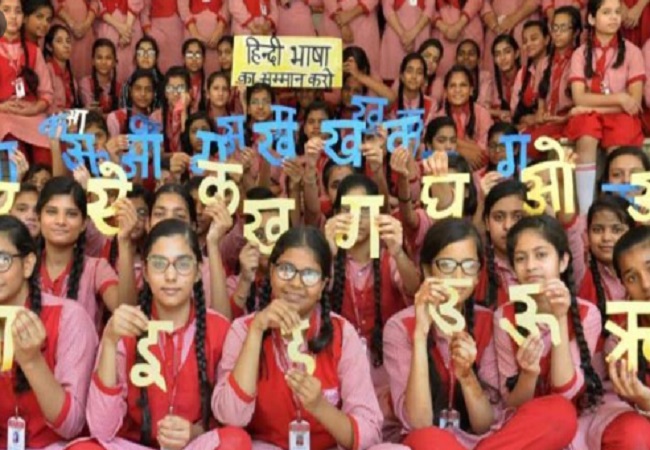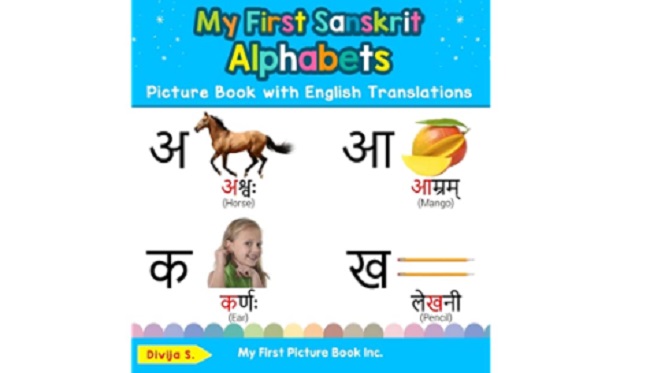



We all know that mother tongue is best if we want to understand the complicated concepts, explain difficult ideas or want to express true feelings. A lot of nations, mainly the nations which were colonized, in Asia and Africa, continue to use the language of colonial powers, even after independence. This is happening because colonial powers introduced their own language as language of instructions, especially for higher education. At primary level, the language of masses, the mother tongue is used but at higher levels the medium instruction is changed to a foreign language. Similar is happening in India and students who come from schools using mother tongue, like Telgu, Tamil, Kanadda, Malyalam, Marathi, Hindi, Punjabi Gujrati, Bengali etc. are placed at disadvantageous position while perusing higher studies. We in India are using English as medium at higher education, more so in specialised fields like medicine, science, technology, law. This is being done on the pretext that we do not have books in Indian languages available in these fields. Now even issue of availability of good journals, especially international journals, is also raised.

Many studies, some even conducted by UNESCO, have revealed that teaching using the mother tongue in the early grades enhances children’s ability to learn better compared to the use of a second or foreign language. The same is true for the later stages in life because the concepts and intricacies can be best explained and understood in mother tongue only. Despite knowing the benefits and usefulness of Mother tongue as medium of instructions we are not able to move ahead and adopt it at university levels. We have to change the mind set about the superiority of English and Educationists need to work on creating environment conducive for Mother tongue, otherwise we may face a situation of “Linguistic Imperialism” and “cultural colonianism”.
The consequences of promoting English at the cost of Indian languages are as under:-
1. We are going to lose our advantage of being multilingual, having more than 100 mother tongues and 22 major languages as recognised in the constitution of India. This had been always the strength of India. But, now, we have been given to understand we can compete and excel in life only if we study English from class one not the mother tongue. In the long run, Indian languages will lose its relevance even at primary levels; and hegemony of English will lead to linguistic imperialism.

2. The students who study in schools using mother tongue at primary level will have to shift to English for higher studies. They are placed at a disadvantageous position because they cannot achieve that level of proficiency in English as a student who have studied in English/ Public schools which have been using English from Nursery/ K.G. classes. This deprives the talented and bright students who are from rural background, poor, Dalits and the ones who are not able to afford English medium schools.
3. Since medium of instruction at higher level will be English, more schools which teaches in mother tongues at primary levels will shift to English. Thus, a stage will come that the schools which teaches in mother tongue will vanish. So there will be no schools for mother tongues and at the most mother tongue will be taught as a second or third language.
4. India will become (If it has not reached that stage partially) a country of English speakers and it may take another 50 years when English will take the place of mother tongue. Already many rich families have changed their language and life style to English as that is considered better with career prospectus and respect in society. This will complete the process of colonisation of minds, culture and beliefs. So it is not the issue of saving the mother tongue only but also your culture, traditions and beliefs.

The situation is alarming and we are not able to appreciate it appropriately. The dominance of USA and UK has been driving the nations, which were not even colonised by British, to adopt English, as it is being dubbed as International language. We all know that many of the countries like China (Mandarin Chinese), France (French), Germany (German), Spain (Spanish), Japan (Japanese), Brazil ( Portuguese), Russia (Russian) and many more have been using their mother tongue for higher studies and are excelling in all fields. Britain had used its language for furtherance the objectives of colonialism and now, is using as a form of cultural imperialism around the world. It was built on the assumption that one language is preferable to others and its dominance is structurally entrenched through more resources to it. Development of resources and capabilities are similar to hen and egg story or a riddle that which came first. If we think of starting using the mother tongue, then resources like study material and published papers will also be produced in the same language but if, like the present situation, we wait for the resources, then these resources will never get produced. This distortion needs to be corrected and mother tongue must be installed as medium of instruction at all levels of education. Vocabulary and resources will keep on developing with the course of time.
India has been grappling with the issue of policy on language of instruction to be used in schools and tertiary colleges. Based on the report and recommendations of the Kothari Commission (1964–1966), the first National Policy on Education in 1968, called for focus on learning of regional languages, outlining the “three language formula” to be implemented in secondary education. Although English is arguably the most widely used language to the extent that it could be considered to be an international language, various developing countries have been debating policy changes regarding the use of vernacular languages or lingua franca as the medium of instruction in their educational systems. Indeed, learning the official language of instruction as a second language is an additional hurdle, which to some extent hinders some students from performing well in their university studies. Thus, students whose mother tongue is used as the language of instruction at their universities have an advantage over students whose mother tongue is not the language of instruction at their universities. One of the factors attributed to poor performance of some students at universities in India is the use of a second language – mainly English– as the language of instruction at the universities. Consequently, policymakers sometimes are debating the idea of introducing, local languages as the language of instruction at their respective universities, but it has not taken the shape of any concrete step.

Today, because of the technological developments, especially in IT, we are in a better position and can find solutions to this problem of availability of resources and other hindrances present in the adoption of mother tongue as a medium of instructions at higher levels. Translation tools can help us in conversion of all resources to mother tongue. So all text books and other resources can be translation quickly. There are issues of terminologies and technical terms, for which sometimes, no appropriate word is available in mother tongue. This also has a solution as we find that many Hindi words are being used in English and same is also true vice versa. The same can be done for such technical terms which has no parallel in mother tongue. The technical names and terms can be used or adopted as such in Indian languages. Once we start using mother tongue at every level, it will enrich the vocabulary of local Indian language. The main issue in medium of teaching is raised for science. The words that comprise the science classroom language fall into two broad components: the technical and non-technical. The former comprises technical words which are specific to a science subject or discipline: photosynthesis, respiration and genes in biology; momentum, capacitance and voltage in physics; atoms, elements and captions in chemistry. When used as science terms, every day words attain new meanings. They become science words. The non-technical component is made up of non-technical words and defines or gives identity to the particular language of learning and teaching in a classroom or the language of a science text. As mentioned earlier, the technical terms can be borrowed in the languages which does not have appropriate words in their mother tongue. As far as I can ascertain from both the literature and personal experience, everything that can be said in one language can also be expressed in another. Where individual words for certain concepts are lacking, vocabulary can be expanded or descriptive phrases used.

Mother tongue education is not the only answer to everything if we intend to introduce mother tongue as medium of instructions at higher levels. Teaching methods and students’ environments have to be taken into account also. It is easier to understand scientific and other complex concepts if these are explained or described in the student’s mother tongue. Improvisation of instructional materials and activity materials will be required to be done because all basic material presently is available in foreign language. Creation of lesson plans which cater the need of the classroom and use of local materials such as local examples from daily life, stories and songs. Pupil should be able to relate to the scientific principles which are being explained. There are not enough mother-tongue based teaching guidelines and references provided for the teachers. Inadequacy in vocabulary, translations and training for mother tongue based technical education must be addressed.
Information technology can be one of the major tool/ asset to handle the deficiency of resource materials and learning tools in mother tongue. A lot of Indian languages are computer able. Translators (Translation apps, translation pens, dictionaries) are widely used. These days, all you have to do is use an app and glide the camera of an iPhone or iPad over text to get an instant translation to the language of your choice or, even simpler, speak into the app and your translation appears. If iPhones or iPads aren’t an option, translation pens or just Google translate on laptops does the same.
There is another argument given that a common link language is also required. Sanskrit appears to be better placed then English, as Sanskrit is more computer friendly; and, at the same time have linkage and commonality of words in every Indian language. Several academics have stated that Sanskrit is the best language for use with computers due to it being the only human language which has a fully defined grammar and a context-free grammar. Given influence of Sanskrit on pan-Indian languages, and its compatibility with computer, it has the potential to be a link language.

In the same way that biodiversity is important for the balance of life on our planet, language diversity is important for the balance of cultures. Unless the government provides an environment in which Indian language speakers have good reasons to meaningfully apply both their languages and cultural traditions without thereby becoming disadvantaged, both regionalization and globalization will result in the loss of linguistic and cultural diversity. The educationists, policy makers and thinkers have to take lead and create environment, change the colonial mind set of superiority of English, and help in creation of resources in Mother tongue / Indian languages so that we could introduce Indian languages at university levels, before it is too late.